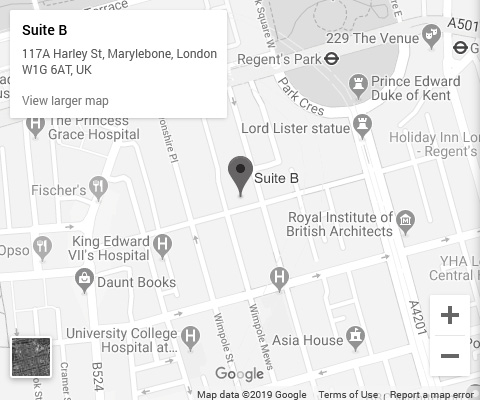.jpg)
Cervical screening, often referred to as a smear test, is one of the most important health checks a woman can have. It’s not just another appointment on your calendar; it’s a powerful tool that helps detect changes in your cervix before they develop into something serious, like cervical cancer. In the UK, cervical cancer affects thousands of women each year, yet many cases could be prevented with regular screenings. Shockingly, statistics show that nearly 20% of eligible women miss their scheduled tests. If you’ve ever wondered why these screenings are so crucial or felt unsure about what they involve, this blog is for you. Let’s dive into everything you need to know about cervical screening and why it matters for your health.
What Is Cervical Screening (Smear Test)?
At its core, cervical screening is a simple procedure designed to check the health of your cervix—the lower part of the womb that connects to the vagina. During the test, a healthcare professional takes a small sample of cells from your cervix using a soft brush. These cells are then sent to a lab to look for abnormalities or signs of infection, such as the human papillomavirus (HPV), which is a leading cause of cervical cancer.
It’s worth noting that cervical screening isn’t the same as an HPV test, although the two are closely linked. The HPV test specifically looks for the presence of high-risk strains of the virus, while the smear test focuses on identifying any abnormal cell changes caused by HPV. Together, these tests form a robust system for early detection and prevention.
Why Cervical Screening Is Important
Let’s talk about why this test is so vital. Imagine catching a problem before it even becomes a problem—cervical screening does exactly that. By detecting abnormal cells early, doctors can remove or treat them before they turn cancerous. This is no small feat: according to Cancer Research UK, around 3,200 women are diagnosed with cervical cancer annually, but when caught early, survival rates soar to over 95%.
The numbers speak for themselves. Women who attend regular screenings reduce their risk of developing cervical cancer by up to 75%. Without these tests, precancerous changes might go unnoticed until symptoms appear—and by then, treatment becomes far more complex. Think of it as giving yourself peace of mind and a fighting chance against a preventable disease.
Who Should Get Screened and How Often?
In the UK, the has clear guidelines to ensure women receive timely screenings. Here’s what you need to know:
-
Age 25 to 49: You’ll be invited every three years.
-
Age 50 to 64: Screenings occur every five years.
-
Over 65: Routine screenings stop unless previous results were abnormal.
High-risk groups, such as those with weakened immune systems or a family history of cervical cancer, should prioritise attending all appointments. Booking a smear test is easy—you can do it through your GP or local sexual health clinic. Some areas even offer walk-in services, making it convenient to fit into your busy London lifestyle.
What to Expect During a Smear Test
Now, let’s address the elephant in the room: what actually happens during a smear test? First, take a deep breath—it’s quicker and less daunting than you might think. The entire process takes about five minutes. Here’s how it goes:
-
You’ll lie back on an examination bed with your knees bent.
-
A nurse or doctor will gently insert a speculum into your vagina to widen it slightly, allowing access to the cervix.
-
Using a soft brush, they’ll collect a small sample of cells.
-
That’s it! You’re done.
While some women report mild discomfort, pain is rare. To make the experience smoother, try relaxing your pelvic muscles and breathing deeply. Wearing loose clothing and bringing headphones to listen to calming music can also help ease nerves.
Protect your health today!
Book your cervical screening test now and stay one step ahead in preventing cervical cancer!
Common Myths and Misconceptions
Despite its life-saving potential, cervical screening often falls victim to misinformation. Let’s bust some common myths:
-
"It’s only needed if I’m sexually active."
False! Even women who aren’t currently sexually active can benefit because past exposure to HPV may still pose a risk. -
"It’s painful and embarrassing."
While the idea might feel awkward, the reality is that healthcare professionals perform these tests daily and maintain utmost professionalism. Any discomfort is fleeting. -
"I don’t need it if I have no symptoms."
Abnormal cells rarely cause noticeable symptoms, which makes screening essential for catching issues early.
Understanding Your Results
After your test, you’ll typically receive your results within two weeks. Most women—about 94%—get a “normal” result, meaning everything looks healthy. However, if your results come back abnormal or HPV-positive, don’t panic. This doesn’t mean you have cancer; it simply indicates further investigation is needed. Follow-up procedures, such as colposcopy (a closer look at your cervix), can determine the next steps.
Remember, follow-ups are crucial. Ignoring abnormal results won’t make them disappear—they’ll only increase the risk of complications down the line.
The Role of HPV Vaccination and Smear Tests
If you’re under 25, chances are you’ve received the HPV vaccine, which protects against high-risk strains of the virus. While this vaccine significantly lowers your risk of cervical cancer, it doesn’t eliminate it entirely. Regular screenings remain indispensable, as the vaccine doesn’t cover every strain of HPV.
Think of the vaccine and smear tests as teammates working together to keep you safe. One provides protection, while the other ensures nothing slips through the cracks.
Barriers to Screening and How to Overcome Them
We get it—life gets busy. Between work deadlines, social commitments, and personal responsibilities, squeezing in a smear test can feel like just another chore. Embarrassment and fear of discomfort are also common barriers. But here’s the thing: delaying or skipping your screening puts your health at unnecessary risk.
Thankfully, the offers plenty of support. Many clinics provide evening and weekend appointments, and some even offer self-sampling kits for eligible women. Additionally, speaking openly with friends or family who’ve had the test can normalise the experience and alleviate anxiety.
Conclusion
Cervical screening is a quick, straightforward way to safeguard your future. It detects problems early, reduces your risk of cervical cancer, and empowers you to take charge of your health. With resources readily available, there’s never been a better time to book your appointment.
So, what are you waiting for? Don’t delay your health. Book your cervical screening today through the or your local GP and take control of your wellbeing. For more information, visit Gynae UK or speak to your healthcare provider.
FAQs Section
Is cervical screening painful?
Most women find it mildly uncomfortable rather than painful. Relaxation techniques can help minimise discomfort.
At what age should I start cervical screening in the UK?
You’ll be invited for your first screening at age 25.
Can I get a smear test if I’m pregnant?
Yes, but timing depends on your pregnancy stage. Discuss with your midwife or GP for guidance.






-in-the-UK.jpg)

